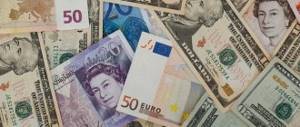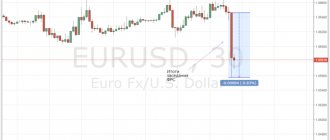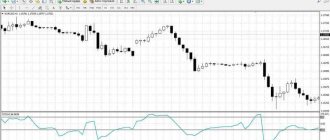- China's new foreign exchange measures will ease financial controls on cross-border trade and investment activities to create a more favorable business environment for SOEs and foreign investors.
- The new measures came into force on October 23, with the exception of the new online reporting system, which will come into effect on January 1, 2020.
- They involve relaxing exchange controls while expanding the scope and application of existing pilot schemes.
On October 23, China's State Administration of Foreign Exchange (SAFE) issued Huifa Notice [2019] No. 28. It covers 12 facilitation measures that facilitate the supervision of cross-border trade and investment financing requirements and aim to create a more favorable business environment for government-owned enterprises and external investors.
Most of the provisions of this article will come into force on the date of issue, with the exception of the online currency reporting system for enterprises engaged in trading in goods, which will come into force on 01/01/2020. While some of these provisions will apply nationwide, many others will apply solely on a pilot basis.
We identify and break down six measures for cross-border trade and cross-border investment in this article.
cross-border trade
Objectives of China's financial policy
The main tasks that are solved by China's monetary policy largely depend on certain features and the current situation in the financial sector of this country.
China has large-scale balance of payments imbalances, which increases upward pressure on the domestic currency exchange rate and the money market. Excessive growth in savings can stimulate an acceleration in the dynamics of credit and investment, which leads to an increase in the risk of economic overheating.
Note 1
This country is characterized by a high level of savings and low consumption, which can lead to a rigid dependence of economic growth on exports and investment. Exports represent a potential driver of China's macroeconomic instability.
Finished works on a similar topic
- Coursework Financial policy of China 410 rub.
- Abstract Financial policy of China 220 rub.
- Test paper Financial policy of China 220 rub.
Receive completed work or specialist advice on your educational project Find out the cost
In such conditions, the People's Bank of China concentrates its efforts on solving certain problems:
- ensure a balanced dynamics of bank loans to enterprises,
- prevent further acceleration and sharp slowdown in the growth of bank loans,
- curb inflation by sterilizing emissions,
- carry out a gradual, controlled strengthening of the national currency.
On the one hand, a sharp strengthening of the national currency can lead to a weakening of the price competitiveness of Chinese products, which will create risks for economic growth. On the other hand, a very strict restriction will not allow effective inflation control.
The tasks being solved by the Chinese monetary authorities are not in conflict with each other. The key element here is the presence of effective elements of sterilization of the money supply, which will relieve the pressure on the money market exerted by the growth of foreign exchange reserves. On the other hand, this will limit the expansion of loans to enterprises. The consequences of limiting the expansion of credit will enable the normal functioning of banks and increase the stability and competitiveness of banks.
Need help creating a study plan? Specify a topic and receive a response in 15 minutes get help
New second
China became the world's second-largest economy back in 2007, displacing Japan, which had held this position for more than a quarter of a century. Since then, in terms of total GDP, China has moved far from other countries and approached the undisputed world leader - the United States (although China now holds first place in the world in terms of GDP at purchasing power parity, to measure the weight of countries in the world economy it is better to use the traditional metric with current exchange rate).
The share of international transactions carried out in yuan was only 1–2% in the early 2010s. Not enough for an economy that already at that time accounted for almost 15% of the world’s.
New player
Photo: Global Look Press/Xinhua/Wang Xiao
However, for a long time, Chinese financial authorities did not care about this discrepancy. A limited convertible yuan without international significance suited Beijing quite well. First, the dollar system worked smoothly in the 1990s and 2000s and allowed China to grow and become rich rapidly, even despite periodic crises.
Secondly, control over the exchange rate, which greatly hampered its internationalization, made it possible to quickly respond to changing global conditions, lowering and raising it depending on the needs of the economy. The United States, although it tried several times to hold China accountable for currency manipulation and undervaluation, did not take real steps for a long time.
“China is not a provocateur and not one who is pursuing expansion”
Chinese Ambassador to Russia Zhang Hanhui on Beijing's views on US policy and economic relations with the Russian Federation
Features of China's financial policy
China is characterized by a growing influx of foreign investment after its accession to the WTO. After 2004, a large-scale influx of loans and credits, including portfolio investments, was added to the intensively expanded volume of direct investment.
China is characterized by rapid growth in income from foreign investment, including remittances from abroad. Given the expansion of foreign exchange inflows through various channels, Chinese monetary authorities are using two main methods to maintain balance in the foreign exchange market.
The first way is to stimulate investments by enterprises, banks and investors in foreign assets. To achieve this, a significant liberalization of the rules that govern cross-border capital transactions in foreign currency is being carried out.
The main areas of change are:
- weaken restrictions on investments of individuals in foreign currency assets to pay for services in foreign currency,
- expand the opportunities for enterprises to purchase foreign currency and accumulate balances in foreign currency accounts,
- simplify the procedure for foreign direct investment for Chinese enterprises,
- provide Chinese banks with significant freedom to place funds on the international market at their own expense,
- weaken restrictions on insurance companies' transactions with securities in foreign markets,
- create an effective channel for legal entities and individuals to place portfolio investments in foreign assets.
The second way to maintain balance is to purchase excess supply of currency into official reserves. At the same time, China’s monetary authority does not regard savings and reserves as an end in itself.
Several main options for allocating part of the funds from these reserves can be identified: capitalization of the pension system, investments in infrastructure, formation of an oil reserve, balance sheet improvement, structuring of state-owned companies, investments in foreign companies and high-yield foreign instruments.
The policy of the Chinese bank in the foreign exchange market is capable of ensuring fairly smooth dynamics of the yuan exchange rate.
Cross-border investment finance
- Remove restrictions on internal equity investments of the capital of the foreign investment fund of enterprises that do not carry out investment activities.
The announcement states that foreign investment enterprises not engaged in investment activities may make domestic equity investments with a capital fund on the basis that they do not violate the current special administrative measures on access to foreign investment (negative list) and that projects invested to China, tested and meet the requirements.
Prior to the introduction of these rules, outside investment companies not engaged in investment activities could only make new equity investments in other enterprises with retained earnings, which limited further investments made in China where the enterprise lacked cash or retained earnings. Thus, the rules provide greater flexibility in investment structure for foreign investors.
- Expansion of the pilot scheme to facilitate the exchange of foreign capital.
Eligible enterprises in the pilot area can use the Capital Improvement Fund, external debt and funds raised through overseas listing for domestic payments without providing supporting documents to the bank to authenticate the transaction on a case-by-case basis prior to foreign exchange settlement. However, SAFE will monitor the use of funds more closely during and after this process.
The rules reduce the processing time for transactions using the Capital Improvement Fund, as it is no longer necessary to provide information before capital settlements are made. This is especially effective for start-up companies that are funded only by shareholder capital and have difficulty obtaining supporting documents (such as supplier invoices) requested by the bank during the start-up period.
Trade turnover around the world
Currently, this pilot scheme is being implemented in 12 free trade zones, as well as several provinces and cities such as Fujian, Zhejiang, Jiangsu, Shenzhen. The reform will expand the scope of the pilot scheme to cover the six new FTZs established in 2021 and the entire Shanghai jurisdiction.
- Easing restrictions on the use of foreign currency capital account funds.
Read more CHINA NEWS News from foreign automakers participating in the Shanghai Auto Show
Rules speed up share transactions between Chinese businesses and overseas investors. This also further simplifies the efficiency of using foreign currency as deposits, and reduces the capital intensity of foreign investors.
According to the message, restrictions imposed on the use of foreign currency payments in the internal asset sales account will be lifted. Now that the domestic capital transferor receives remuneration for transferring funds from an external investor, he can directly handle the account opening, capital transfer and bank settlement procedures with the corresponding business registration certificate.
It is also planned to ease restrictions related to the use of deposit accounts of foreign investors. The Overseas Investor Deposit Fund can be used to make investments in China and make payments.
- Foreign loan registration reform.
Non-bank debtors can now directly approach the bank to de-register their external debt, rather than having to deal with SAFE, thereby reducing the overall time required to de-register external debt.
On a case-by-case basis, registration of external debts of non-financial enterprises through SAFE will now be abolished on a trial basis - this will be applied on a trial basis in Hainan Province and the Guangdong-Hong Kong-Macao Business Zone. Non-financial enterprises under the PP can now register external debt up to doubling their net assets with the local foreign exchange bureau. Non-financial enterprises can borrow external debts up to the registered amount and carry out procedures for transferring funds directly to the bank, replacing the old rule of individual registration with a safe one for each loan.
- Remove restrictions on the number of open foreign currency accounts for capital
Eligible enterprises may open multiple foreign currency capital accounts according to their actual business needs, but the number of accounts opened must meet prudential supervision requirements.
- Expand the pilot plan to transfer domestic credit assets to foreign countries.
Under the new rules, the channels, types of domestic credit assets and the range of persons able to participate in overseas transfer will be expanded in the pilot zone in Hainan Province and the Guangdong-Hong Kong-Macao Greater Bay Area. Foreign investors will now be able to make cross-border transfers of non-performing assets and can use external capital to directly participate in the Chinese non-performing asset market - changes that will undoubtedly enrich their existing investment channel.
Guangdong-Hong Kong-Macao
Structure of the banking system in China
Its key feature is its three-level structure. At the first level there is the People's (Central) Bank of China and the China Development Bank (3 pieces). The central one plays the role of the emission/credit center of the state; its leadership is entrusted with the task of developing and implementing monetary and credit policies. Management and control is carried out by the All-China Banking Regulatory Commission.
Development banks conduct activities aimed at supporting public administration, the agricultural sector and export-import operations. The Chinese banking system implements government programs in various areas with the help of financial structures under the direct control of the authorities. The next step is occupied by the Big Four banks.
Offshore accounts in Hong Kong
Hong Kong enjoys the status of a special administrative region. This is an offshore zone in which businesses are not subject to income tax, regardless of the location of their economic activity. Therefore, local entrepreneurs often open their accounts in Hong Kong.
However, there are certain restrictions. This opportunity is available to owners of companies whose age is more than one year and whose capital is $10 thousand. You must also confirm that you have no outstanding debts and pay the required fees. These actions will confirm that the company is solvent.
Hong Kong
Banking services for Chinese citizens and foreigners
Chinese commercial banks serve both local residents and foreigners and have an open policy. The list of services includes:
- provision of conventional and interest-bearing mortgage loans;
- attracting deposits;
- making payments and supporting transactions through cash registers;
- provision of financial investments according to the requirements of investors at the expense of depositors;
- issuance of securities;
- acquisition or sale of currencies of other countries, precious metals or jewelry;
- control over funds at the disposal of the bank.
In addition, employees of financial institutions advise their clients, provide brokerage services, perform transfers and issue credit cards.
What problems exist in the Chinese banking system?
Unfortunately, Chinese banks represented in Moscow and other Russian cities are gradually curtailing their activities. The Chinese authorities support the opinion of the international community; they took advantage of Russia’s aggressive international policy by supporting multiple sanctions. This creates certain legal problems for Russian investors.
Also, the local banking system is influenced by a number of other social and economic factors:
- “poor quality” debt structure. There is a whole list of public and private institutions that have large debts amounting to hundreds of billions of yuan;
- low efficiency of lending models and risk assessment. This is a direct result of excessive government control;
- high tax burden and credit rate.
Despite all the problems of the payment system, foreign and local companies invest their money in business in China, because with the right approach, the local market can provide huge profits.











